The face actually says it all. It depicts my initial reaction post receiving an email from the lovely women at Fireworks PR to attend a Sake Masterclass with some ladies and gents at the newly opened Wagamama restaurant in Southbank.
Learn about something that I know very little about whilst devouring the delectable cuisine of the Japanese?
“Ohhh yeahhhh!” (And the face was made).
The three months I spent living in Japan back in 2004, did nothing to nurture any attempts at sake education. I was 17 years old at the time, not that that is any excuse, but I was living in the middle of a country area in the Gunma prefecture, which was not the most conducive location to delving into that hidden sake pastime that lurked within. To be honest, I often associated sake with lonely, old Japanese men sitting at bars. My only exposure presented itself on a day trip to Tokyo at one of the more elusive and expensive sushi restaurants on behalf of my host father. I was mightily impressed, but in that instance I cannot say that I picked up anything on the nuances or complexities of the fermented rice drink before me.
I can only attribute the prolonged lack of education in the sake department to a blatant laziness, since I have instead dedicated more time to the alcoholic beverage of the grape that we like to call wine.
‘The times they are a-changin‘, so I hear.
I will not pretend that after one masterclass with Melbourne-based sake master Toshi Maeda, that I am now Ninja Turtle-qualified in my sake knowledge.
No siree. That would just be plain silly. But after using 5-minutes of my life to create the above picture, I certainly feel like I should.
However, I did pick up on the basics as we strode through the line-up of not one, not four, not seven, but ten different Japanese beverages.
One) The night began, quite ornately, with a sake cocktail using choya umeshu, cointreau, ruby grapefruit juice, fresh lychee lime and a splash of soda water.
Presentation? Immaculate.
Taste? Tart and positively refreshing on this balmy summers evening.
Then the real sake session began:
Two) Kizakura Hoshinonagarea Happo Sparkling Junmai paired with Wagamama’s salmon wonton edamame.
Made with only rice, water and koji mold. The rice used must be polished to at least 70%**. Often a full and solid flavor profile, clean and well structured.
Pebble stone freshness, flor yeast (fino) element, milky sweet but has a dry finish. The oily richness of the salmon nicely highlighted the sweet element in the sparkling sake.
Three) Tateyama Junmai Ginjo from Toyama’s north coast.
Junmai Ginjo sake are brewed with labor-intensive steps, eschewing machinery for traditional tools and methods, using highly polished rice (at least 60%**) and fermented at colder temperatures for longer periods of time. Best matched with seafood, they are light, fruity and refined.
This was a rare blend of two rice, yamadanishiki and gouhyaku mangoku. Plenty of green apple and green tea characters followed by a savoury mid-palate, with white nectarine flesh and oyster shell towards the finish.
Four) Seikyo Junmai Ginjo Omachi from Hiroshima on the south coast paired with Wagamama’s soy and mirin prawns and yasai skewers.
Similar to the previous sake, but more open with a broader palate. Made from omachi rice (single breed). For fermentation, they use the apple yeast that the company became famous for 100 years ago when they isolated it from the skin.
The evening was moving along quite smoothly. There were nice little breaks in between the courses and sake to allow for discussion with the people seated around you. But the next sip of sake was never too far away.
Five) Asabiraki Namburyu Tezukuri Daiginjo from Iwate in the mountains paired with Wagamama’s chilli squid, tori kara age and steamed yasai gyoza.
A subclass of ginjo sake, daiginjo is brewed with very highly polished rice (to at least 50%**) and using even more precise and labor intensive methods. It is the pinnacle of the brewers’ art. Generally light, complex and quite fragrant.
Being from the mountain area, Toshi informed us this would have a bolder flavour, with more richness and body. The Daiginjyo would also be more floral, but I picked up more of a candied lemon twist that stood out from the previous two.
Six) Ranman Tokusen Ginjo from Akita in the mountains.
Suited to stronger flavoured foods. Was served at room temperature and appeared more delicate and clean than the one prior.
Seven) Tatsuriki Tokubetsu Junmai Yamadanishiki from Hyogo. An urban sake paired with Wagamama’s beef teriyaki and spicy itame tofu.
Tatsuriki means ‘dragon power’, and tokubetsu is ‘special’. This was clearly a strong style (if the dragon reference did not make that clear). It is often referred to as an ‘otoko’ sake, or a male sake, as it uses hard water with lots of minerals which speeds up the fermentation so you have more body and a drier sake as a result. This and the following were served warm, which helped to accentuate the spice, white flower and banana ester tones I picked up.
Eight) Kizakura Yamahai Jikomi from Kyoto. Another urban sake.
This is the female form, using softer water (less minerals, lots of sugar, rounded and sweet). It uses the Yamahai method. I enjoyed having these beverages warmer (around 45-50C) but out of the male and the female, for interest sake I came to prefer the spicier, floral tones of the male.
What an event. Thank you to Wagamama and the Fireworks ladies for organising a seamless evening with fabulous Japanese cuisine.
Finally, ありがとうございます Toshi-kun for all your expertise and for igniting a real interest in Japanese sake once more.

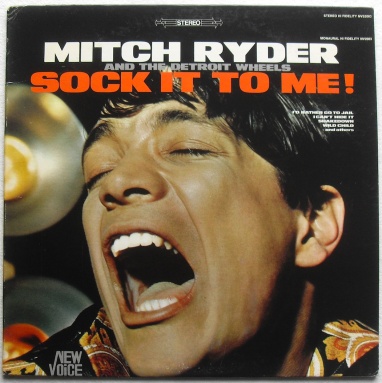

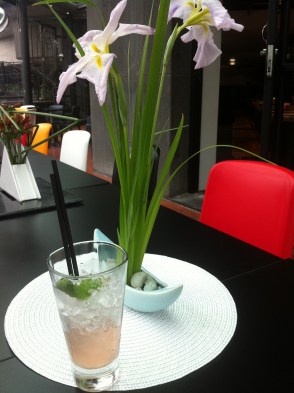
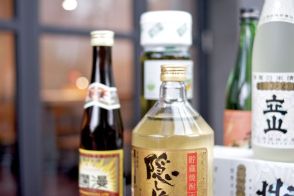
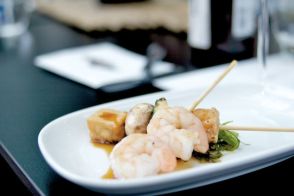
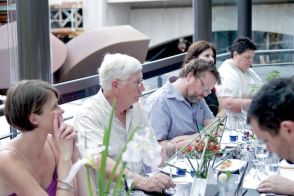
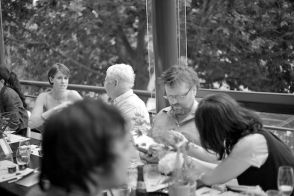

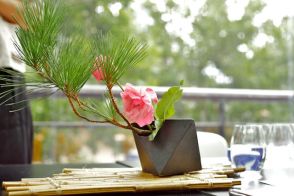


Leave a Comment